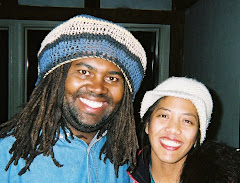Steve Quayle on Secrets, Stargates, Aliens & Giants
DiscoveryDisclosure
Author and researcher Steve Quayle contends that most citizens in the West are unaware that they've been fed a carefully edited view of the past, tailored to prop up the powers that be and keep humanity ignorant. Comparing common strands in the legends of the North, Central, and South American native cultures, he found evidence for aliens or star people who bred with humans, the presence of stargates or interdimensional portals, and various creatures who have a supernatural aspect such as giants, Sasquatch, and skinwalkers (beings that can change shape or form). Institutions like the Smithsonian have deliberately kept such information from the public, he commented, adding that America's name didn't actually come from a European explorer, but from an Incan ruler, Tupac Amaru (glowing serpent), and their land which mapmakers of the era called Amaraca.
"Even the very name of America, North and South leads to Quetzalcoatl [feathered serpent god]...the giant who came from the East who settled Mesoamerica," according to the Aztecs, Quayle remarked. "We're talking about entities that could transform themselves into different shapes, i.e. fallen angels-- Virococha is who the Mayans worshiped in the same manner as Quetzalcoatl," he added. He also cited the term "nephilism" to describe the fallen angels who mated with Earth women to produce giants. What perhaps pioneering researchers such as Zecharia Sitchin and Erich von Daniken missed is that the ancient astronauts or Annunaki were actually the Nephilim or fallen angels, described in the Bible, he argued.
Many Native Americans have reported seeing portals opening before their eyes, and their oral histories detail a race of giants who were cannibals, Quayle stated. They also describe Bigfoot or Sasquatch as highly intelligent creatures that can travel dimensionally (according to Quayle's military sources the creatures can communicate telepathically). The Book of Enoch writes that when giants were killed, they became disembodied spirits, which Quayle suggested are the incubus and sucubus, predatory sex demons that sometimes plague humans while they sleep.
Biography:
Stephen Quayle is the author of five books. For over thirty years, he has been investigating ancient civilizations, giants, UFOs and biological warfare as they relate to the future of mankind. Stephen discusses the coming worst-case scenarios approaching this world and how they interrelate to each other. Earthquakes, volcanoes, nuclear and biological terrorism, coupled with the planned financial meltdown of the U.S. dollar will thrust us into unimagined tribulations. Stephen Quayle is on record as stating that we have moved from the realm of natural threats into the arena of supernaturally guided events of the unseen hand of evil orchestrating world events of unfathomable proportions.
Quetzalcoatl is a Mesoamerican deity whose name comes from the Nahuatl language and means "feathered serpent". The worship of a feathered serpent deity is first documented in Teotihuacan in the first century BC or first century AD. That period lies within the Late Preclassic to Early Classic period (400 BC--600 AD) of Mesoamerican chronology, and veneration of the figure appears to have spread throughout Mesoamerica by the Late Classic (600--900 AD).
In the Postclassic period (900 -- 1519 AD), the worship of the feathered serpent deity was based in the primary Mexican religious center of Cholula. It is in this period that the deity is known to have been named "Quetzalcoatl" by his Nahua followers. In the Maya area he was approximately equivalent to Kukulcan and Gukumatz, names that also roughly translate as "feathered serpent" in different Mayan languages.
In the era following the 16th-century Spanish Conquest, a number of sources were written that conflate Quetzalcoatl with Ce Acatl Topiltzin, a ruler of the mythico-historic city of Tollan. It is a matter of much debate among historians to which degree, or whether at all, these narratives about this legendary Toltec ruler describe historical events. Furthermore, early Spanish sources written by clerics tend to identify the god-ruler Quetzalcoatl of these narratives with either Hernán Cortés or St. Thomas—an identification which is also a source of diversity of opinions about the nature of Quetzalcoatl.
Among the Aztecs, whose beliefs are the best-documented in the historical sources, Quetzalcoatl was related to gods of the wind, of Venus, of the dawn, of merchants and of arts, crafts and knowledge. He was also the patron god of the Aztec priesthood, of learning and knowledge. Quetzalcoatl was one of several important gods in the Aztec pantheon, along with the gods Tlaloc, Tezcatlipoca and Huitzilopochtli.
Subscribe to:
Post Comments (Atom)
















No comments:
Post a Comment